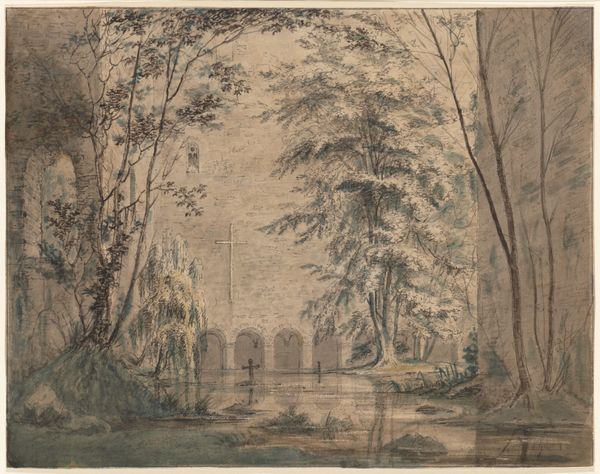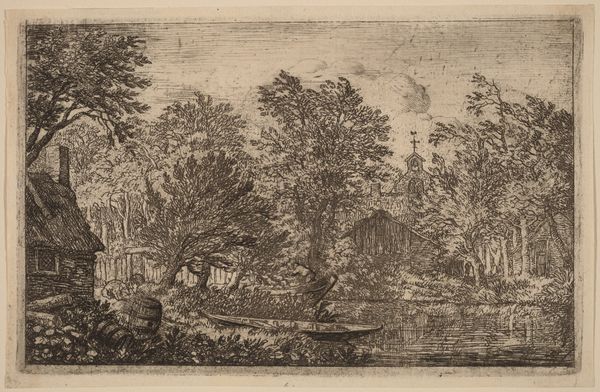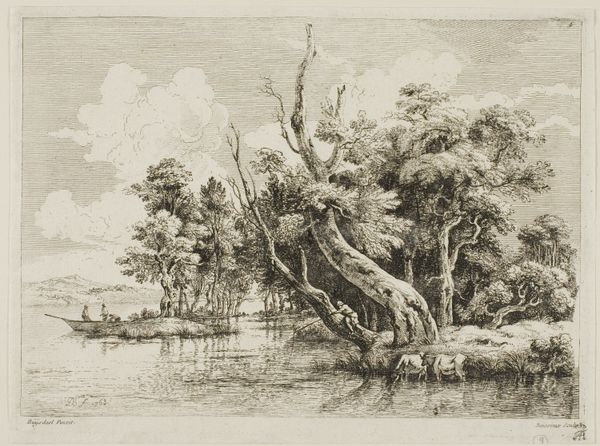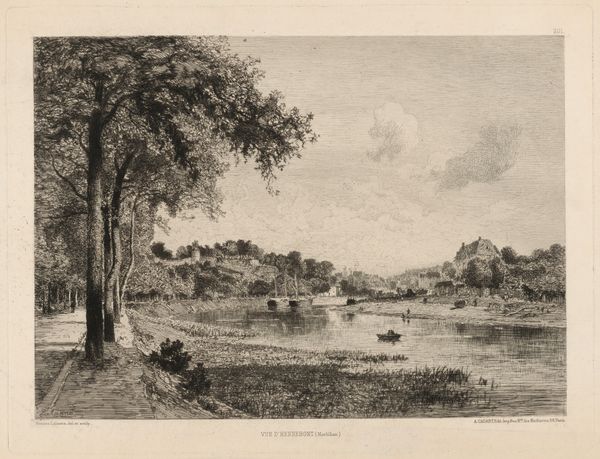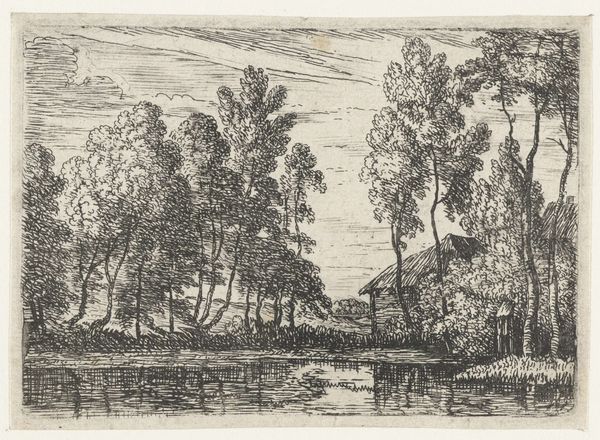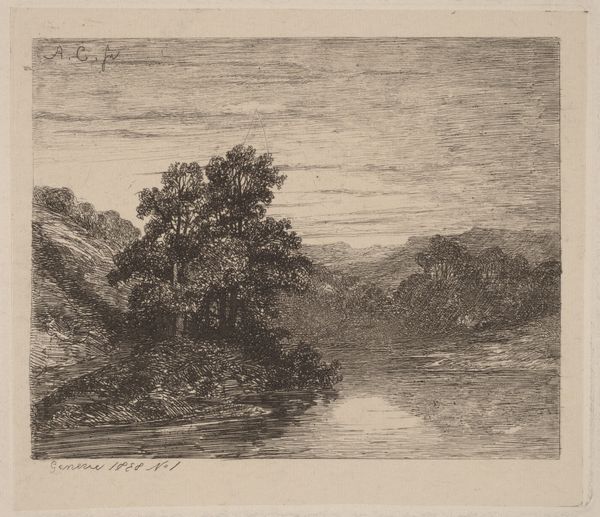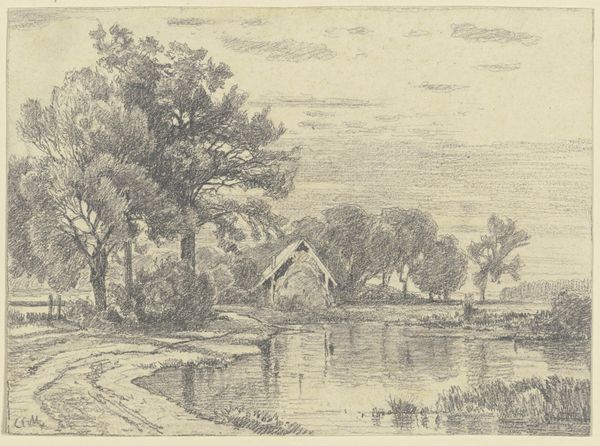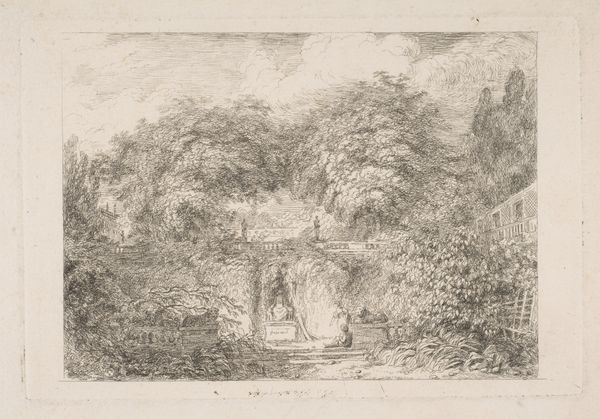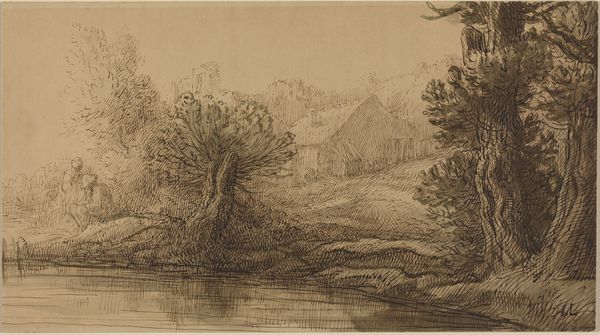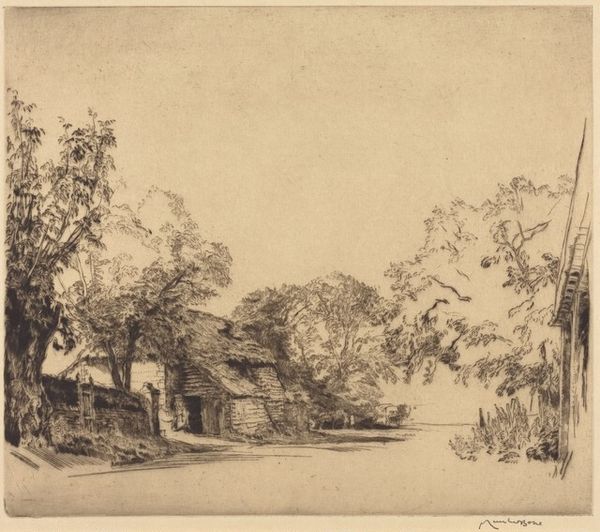
Copyright: Public Domain
Curator: Johann Christian Reinhart's "Nocturnal River Landscape," dating from around 1780, offers a glimpse into the artistic sensibilities of its time through the subtle combination of pen, ink, graphite, charcoal, and pencil on paper. Editor: Immediately, I’m struck by the almost monochromatic tonality—the gradations of sepia give it an eerie, contemplative mood. You can almost feel the chill of the night air. Curator: Indeed. The skillful application of layering and shading is quite striking. The formal arrangement emphasizes the balance between light and dark, creating a dialogue between the architecture on the left, reflected in the water, and the group of figures clustered by a fire on the right. Note the dynamism. Editor: I’m curious about Reinhart's choice of materials. Was the accessibility of pen, ink, graphite, and charcoal a factor, perhaps indicating this was a preliminary study? Also, is this “river landscape” one we can concretely map somewhere? Or something in his imagination? Curator: Those are both valid and crucial insights. The multiplicity of these materials reflects the artist’s engagement with a readily available set of tools, aligning it with a working process often outside the high academic tradition. As for the site, whether imagined or real, the Romantic impulse to find sublime harmony in nature is undeniable here. Editor: Right, the labor invested is also revealed through the meticulous hatching and cross-hatching, which add depth and texture, it all evokes a sort of slow attentiveness that really does give insight into its moment. It’s also useful, in this context, to reflect on Reinhart's social position: the resources, connections and education that gave access to the leisure, not just the materials. Curator: A compelling reading of the piece—considering access and resources. Returning to form, I'm captivated by the economy of line, that defines shapes without unnecessary adornment; It’s this calculated approach that truly elevates the drawing. Editor: Thinking about the work and Reinhart, it strikes me that a material analysis enhances my appreciation of its intrinsic qualities—that this image as is couldn't exist in another time and context. Curator: Absolutely. By dissecting its construction, our reading of this artwork broadens. It no longer stands isolated, but rooted firmly within its temporal and material framework.
Comments
No comments
Be the first to comment and join the conversation on the ultimate creative platform.


